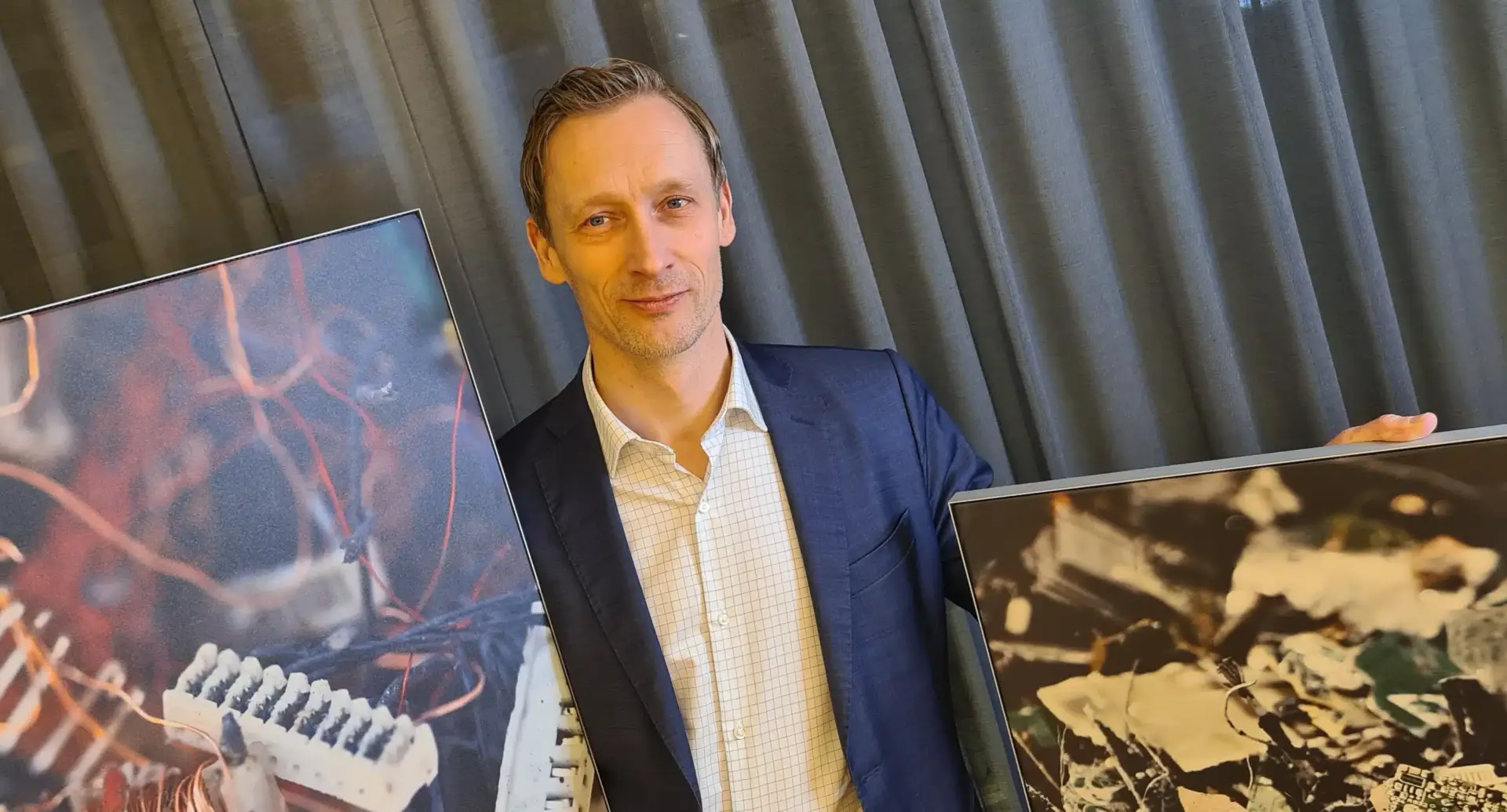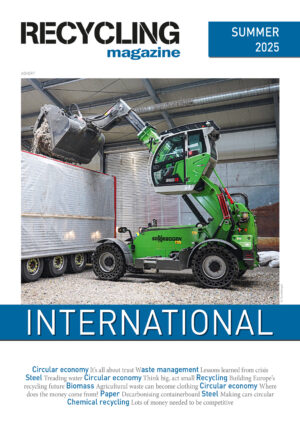ICM: Could you start by presenting Boliden and your activity in a few words?
Raymond Langevoort: Boliden is a base metals company, operating 5 mining areas, of which the Aitik copper mine and Garpenberg zinc mine are the two largest mines operated in Sweden. The company’s smelter division operates six smelters: a secondary lead smelter in Bergsöe, Sweden, our Odda zinc smelter in Norway; the Kokkola zinc smelter in Finland; the Rönnskär copper smelter in Sweden; and the Harjavalta copper smelter in Finland. In Harjavalta, Finland, we also operate a nickel smelter. Besides lead, zinc, copper, and nickel, Boliden also produces by-products such as gold, silver, palladium, and sulphuric acid.
The Rönnskär copper smelter is one of the largest consumers of WEEE and other secondary raw materials as the last step in the recycling chain. What makes Rönnskär unique is its capability to handle hazardous elements in a sustainable manner. Besides this, Rönnskär produces low carbon copper from primary raw materials as well as from secondary raw materials. The low carbon copper originating from concentrates produced by Boliden’s Aitik mine has the lowest carbon footprint around. This has been achieved through high efficiency, automation, and electrification at the mine and smelter, as well as the low CO2 footprint of the electricity mix in Sweden.
What is your role in the group?
My role is to take care of the raw material supply to both copper smelters. This includes a large volume of primary raw materials produced by copper mines around the globe, as well as secondary raw materials. For this, we have a team of 7 Purchasing Managers located in different places, but mainly close to the smelters to be close to the raw materials our suppliers deliver and to be able to provide the best service possible to our suppliers and Boliden’s smelters.
What is the importance of electronic waste for your business?
Electronic waste is an important source of critical metals like copper. The demand for copper is increasing due to the rapid increase in electrification in our society (e.g., EVs and the required infrastructure for charging stations) and the demand for sustainable green energy. It is great that electronic waste, as a raw material smelted and refined at Boliden’s smelters, can contribute to the future of society with increased electrification and renewable energy sources. Copper from primary sources would not be sufficient to fill the demand for copper.
As an example, Boliden’s low carbon copper was used in the construction of the Doggerbank wind farm, which is the largest wind farm currently being built. It is a great synergy to use low carbon copper in a project that will generate green energy. Copper originating from the recycling of electronics can potentially be used in such projects or, for example, in an electric vehicle. So recycled copper is being used to secure a better environment for future generations, and Boliden is proud to contribute to this.
The treatment of electronic waste has several challenges to face, though. The material has a decreasing metal content and an increasing plastic content. This means more effort is needed to treat the material properly, potentially more CO2 is emitted, and less metal is recovered. This is a challenge for the whole recycling chain, and we are working on our processes to make sure that the materials can still be smelted at Boliden’s smelters in the future, because sufficient treatment capacity is required to handle the increasing amount of electronic waste and to avoid transportation around the globe, which increases CO2 emissions and costs.
What are the main drivers, and what trends and challenges do you see in the near future?
Our main driver is to provide metals essential for future generations in the most climate-friendly and sustainable manner possible. Recycling contributes to this sustainable metal production.
The challenge of increasing plastic content is however a trend that possibly contradicts this, as more CO2 will be emitted in the case of increased non-recyclable plastics in electric appliances. There is also an increased focus required on securing a sustainable supply chain for these materials, following the OECD guidelines and UN Global Compact, which Boliden is adhering to.
What is Boliden’s strategy to overcome the challenges?
With regard to the valuable contents in electronic waste, we have to make sure that our processes can handle the decreasing contents of valuables and the increasing contents of impurities and plastics in the future. Technically, this can be a challenge, but even more so economically. Recycling is not cost-free and involves many stakeholders to complete the cycle. All players are currently facing increased costs related to inflation and high energy prices, but also related to the development of processes to dismantle and sort.
Regarding energy, Boliden’s smelters are using heat generated from smelting raw materials in their own processes, as well as distributing the heat to nearby communities. Tighter regulations are there for a reason, and they incite producers, consumers, and recyclers, including Boliden as an end-of-life facility, to do the best we can to put sustainable processes in place. This can sometimes be problematic, as regulations can change faster than stakeholders can adapt. Some of the regulations Boliden understands very well, such as restrictions on where electronic waste may be shipped to and where it may be treated. We also understand the challenges with this, but taking care of our own waste within Europe to high sustainability standards is normal. This is why collaboration with our suppliers is important to maximise recycling and value creation.
Who is the target market for your low-carbon copper?
Boliden’s low-carbon copper has gained a lot of interest from manufacturers who want to decrease their Scope 3 emissions, resulting in a low carbon footprint of the product they put on the market. Like the Doggerbank wind farm example, a cable producer providing cables to the project produced cables with a low carbon footprint, contributing to a low carbon windmill. In its turn, it will generate more renewable energy and reduce CO2 emissions from alternative energy sources.
How do you see the future of electronics recycling?
Challenging! There is a lot needed to secure proper and sustainable recycling going forward and to accommodate the increase in electronic waste generation.
Why are you supporting IERC 2023?
The IERC is a great conference where many market participants can meet and exchange thoughts, a place to meet everyone in a few days instead of travelling around too much. And as Boliden is very much in favour of recycling metals, as this is contributing to the sustainable metal production that is required to match the growing metals demand, this is the place where we need to be. To share our thoughts and present our great company, which provides metals essential to improving society for future generations.











